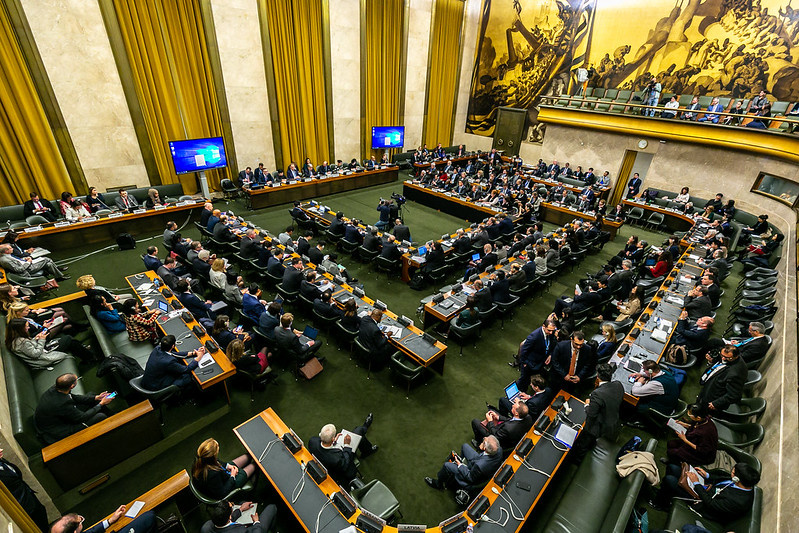Sobrescribir enlaces de ayuda a la navegación

STATES PARTIES TO CONVENTION ON CERTAIN CONVENTIONAL WEAPONS CONCLUDE DISCUSSIONS ON LETHAL AUTONOMOUS WEAPONS SYSTEMS

From 13 to 17 April 2015, the States parties to the Convention on Certain Conventional Weapons (CCW[1]) held intense discussions at the United Nations in Geneva on lethal autonomous weapons systems (LAWS) in a Second Meeting of Experts devoted to this subject.
Presiding over the Meeting of Experts was Ambassador Michael Biontino of Germany who has summarized the proceedings of the meeting as follows: “Our task was to discuss questions relating to emerging technologies in the area of lethal autonomous weapons in the context of the objectives and purposes of the conventions. In preparing for the meeting my intention was to give room in our discussions, in a balanced way, to all issues pertinent to LAWS. There was a general expectation that we should build on last year’s discussion and deepen the understanding of LAWS. In addition, I had proposed that we engage, where appropriate, in a more policy-oriented discussion. There was, furthermore, wide consensus that we should concentrate on tangible issues that have the potential to lead to common understandings paving the way for a continued discussion in the framework of the CCW. I am personally grateful all those who contributed to this endeavour. I believe, we have achieved the task set out for us and will be happy to report so to the CCW.”
This second meeting was a follow-up to last year’s gathering to address the implications of emerging technologies in the area of lethal autonomous weapons systems. Fully autonomous weapons systems are generally understood to be weapons systems that could identify and attack a target without human supervision. The Meeting of Experts was aimed at promoting a better understanding of emerging autonomous technologies and to consider the implications of such systems for international law, and in particular international humanitarian law. Also, under examination were the characteristics of autonomous weapons, ethical issues, questions on general security and human rights.
Opened by Ambassador Ravinath Aryasinha of Sri Lanka as Chairperson-designate of the 2015 Meeting of the High Contracting Parties to the Convention, the Meeting of Experts received a video message from the United Nations High Representative for Disarmament Affairs, Ms. Angela Kane who stated that “Over the past two years, this issue has evolved rapidly from the realm of science-fiction to a serious international concern. This is fitting given prevailing trends – which include the rapid pace of technological development and the increasing automation of military systems.”
_________
[1] Formally known as the Convention on Prohibitions or Restrictions on the Use of Certain Conventional Weapons Which May Be Deemed to Be Excessively Injurious or to Have Indiscriminate Effects, the CCW bans or restricts the use of specific types of weapons that are considered to cause unnecessary suffering or which have indiscriminate effects. The CCW entered into force in 1983 and it is an umbrella convention which sets out the legal rules for joining the regime and its entry into force. It has five Protocols that set out the specific prohibitions, restrictions and other provisions. The umbrella convention format allows the CCW to respond to new challenges concerning conventional weapons as the States Parties can negotiate and add further protocols to the regime. Currently 120 States are party to the Convention with a further five having signed but not yet ratified.
For further information, please contact: the CCW Implementation Support Unit, United Nations Office for Disarmament Affairs, Geneva Branch; E-mail: ccw@unog.ch or visit our website: www.unog.ch/ccw.
For use of the information media; not an official record
DC15/024E
